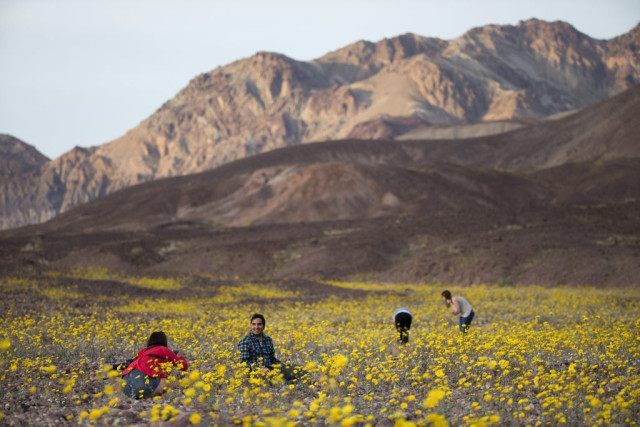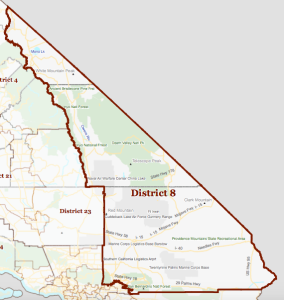Editor’s note: The presidential nominating contests in both parties will come down to the California primary.
For Democrats, 548 delegates are at stake — 11.5% of the total. For Republicans, 172 delegates are at stage — 6.9% of the total. Of those, for Democrats, 158 (29%) are divided proportionally on a statewide basis, while 317 (58%) are divided proportionally by congressional district, with each district providing between 5 and 8 delegates. The remaining 73 (13%) are “superdelegates.”
For Republicans, 13 (8%) are awarded statewide, with ten going to the candidate with the highest number of votes on a winner-take-all basis, and three going to “pre-determined” delegates (the State Chair, National Committeewoman, National Committeeman). Meanwhile, 159 (92%) are awarded by congressional district on a winner-take-all basis, with each district providing 3 delegates.
The result: a district-by-district battle in both parties, which we preview for you here.
CA-08: California’s largest district by area runs from the outskirts of San Bernardino through Death Valley and along almost the entire diagonal portion of the state’s border, taking in deserts, mountains, and military installations. It is a conservative district, though represented by one of the Republican caucus’s centrist members, Paul Cook, who serves on committees dealing with the military, foreign affairs, and natural resources — the district’s key issues.
Prospects:
Democrats: Though the rural district might seem to favor Sanders, its military focus will give Clinton an edge.
Clinton 3, Sanders 2
Republicans: Trump wins the military vote, but Cruz is more organized in the region’s conservative strongholds.
Cruz 3, Trump 0, Kasich 0
Joel B. Pollak is Senior Editor-at-Large at Breitbart News. His new e-book, Leadership Secrets of the Kings and Prophets: What the Bible’s Struggles Teach Us About Today, is on sale through Amazon Kindle Direct. Follow him on Twitter at @joelpollak.


COMMENTS
Please let us know if you're having issues with commenting.